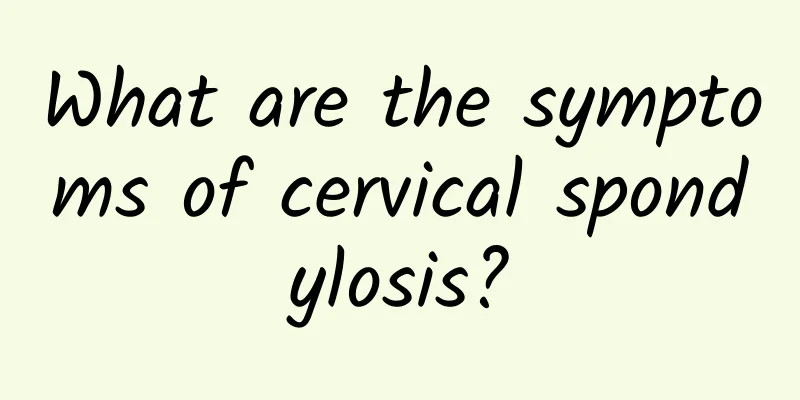What are the effects of donating hematopoietic stem cells on the body?

|
In order to cure diseases such as leukemia, transplantation surgery has to be performed to donate hematopoietic stem cells to patients. However, in the general impression of people, donating hematopoietic stem cells seems to be a very scary thing, and they are worried that it will cause great harm to the donor's body. In fact, this perception is mainly due to the fact that people do not understand the process of donating hematopoietic stem cells, and this situation is relatively rare. How is hematopoietic stem cell donation collected? We the general public don't know much about hematopoietic stem cells. It is the same as donating blood, which is equivalent to donating a component of blood. In the past, people were more afraid and worried when it came to donating hematopoietic stem cells. Everyone thought it was extracting bone marrow. Before the 1980s, this was indeed the way of collecting blood, which was to inject anesthesia into the donor's cavity, extract bone marrow, and transplant hematopoietic stem cells. Now with the development of science and technology, the most advanced peripheral blood collection method is now adopted, which is to insert needles in both arms, one arm goes out and the other arm comes back, that is, the hematopoietic stem cells are separated through a blood cell separator, and the other components such as red blood cells, white blood cells and platelets are returned to our donor's body. At the same time, the consumables and materials used in the collection process are disposable, safe and reliable, and there will be no infection from other diseases due to donating hematopoietic stem cells. What are the effects of donating hematopoietic stem cells on the body? Hematopoietic stem cells are complete cells. The process of converting white blood cells into red blood cells is also a metabolic process. They are also cells. Since they are cell donations, they are a cyclical process of metabolism, growth, death, growth and death again. So just like donating blood, our cell count will return to normal in one to two weeks. It is understood that in our country, more than 2,600 people have participated in donating hematopoietic stem cells. So far, no one has suffered any physical impact due to donating hematopoietic stem cells. Among the more than 50 hematopoietic stem cell donors in our province, there are miners, farmers, civil servants, doctors, college students, taxi drivers, teachers, civil servants, etc. The youngest donor was 19 years old and the oldest was 51 years old. At the same time, joining the Chinese Hematopoietic Stem Cell Donation Registry is very simple. As long as you are a healthy citizen between the ages of 18 and 45, you can join the Registry voluntarily and free of charge and donate blood at a blood donation center. Afterwards, if there is a leukemia patient who successfully matches you, the Red Cross will contact the volunteer as soon as possible. Donating hematopoietic stem cells will not affect your health. Bone marrow transplantation requires hematopoietic stem cells from the human body's bone marrow. The weight of an adult's bone marrow is about 3 kilograms. A bone marrow donor can save a leukemia patient by providing less than 10 grams of bone marrow hematopoietic stem cells. Therefore, donating bone marrow hematopoietic stem cells will not weaken their immune function and hematopoietic ability. Bone marrow is a tissue with strong regenerative ability. After a healthy person donates hematopoietic stem cells, the amount of donated stem cells can usually be replenished in about 10 days. There are two methods to extract hematopoietic stem cells. There are two methods to extract hematopoietic stem cells: one is to puncture the donor's iliac bone to collect hematopoietic stem cells from the bone marrow. - There will be some pain in the area within 2 days, which usually heals within a week. The second is to use scientific methods to effectively mobilize the marrow and other parts of the body to release a large number of stem cells into the peripheral blood. The blood is collected from the donor's arm vein, the hematopoietic stem cells are separated by a machine, and the remaining blood is returned to the donor's body. At present, the donation of hematopoietic stem cells mainly adopts the second method. |
<<: What to eat to make blood faster and more
>>: What is the reason for high white blood cell index in sediment
Recommend
What causes intermittent pain on the right side of the head?
Headache is a very common physical disease in dai...
Symptoms of pancreatitis
Diseases are very common in life. Different disea...
Symptoms of Yang deficiency cold
Yang deficiency cold is a disease name in traditi...
What are the easiest ways to cure a red nose?
Everyone knows that a red nose will seriously aff...
Can diarrhea in early pregnancy cause miscarriage?
For women who have just become pregnant, they act...
Effects and functions of Taizishen
I believe everyone knows the effects of ginseng i...
What are the little red spots on my body?
If you want to have a healthy body, you also need...
The efficacy and function of white hemp leaves
White hemp leaf is a relatively common plant. It ...
How to treat people with Qi and blood deficiency
Due to their unique physiological structure, wome...
Is there a connection between kidney stones and sex life?
The kidneys are very important organs for the bre...
What should I do if I have cervical bone hyperplasia?
For cervical spondylosis, of course, we must pay ...
TCM treatment of erosive gastritis
Erosive gastritis is a relatively common gastroin...
How to treat exophthalmos due to hyperthyroidism?
Many people often suffer from hyperthyroidism in ...
What to do if your baby has chapped lips? Here are some tips to protect your baby’s delicate skin
Due to the dry climate, babies drink less water a...
What causes itchy belly during pregnancy?
Many pregnant women will feel itchy in their stom...









